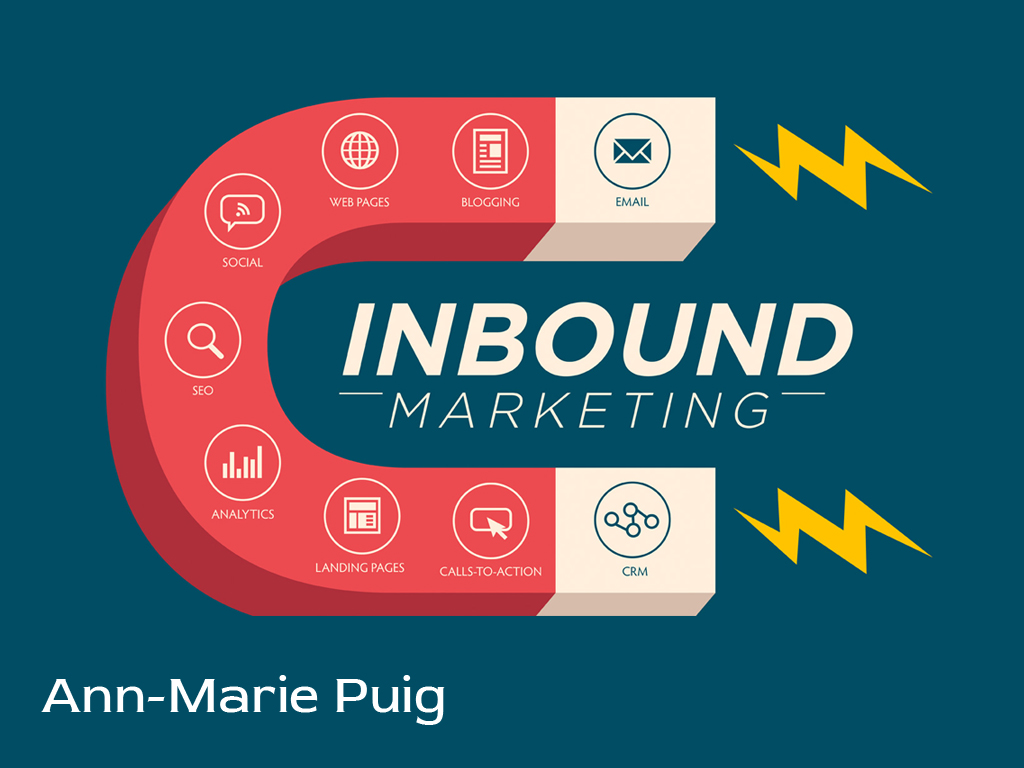One of the goals of an inbound marketing campaign is to create a company-owned, non-dependent traffic capture channel for your own customers. This engagement channel represents an asset for the company, because, as you invest in it, you can increase the number of people who reach your page and who become customers, leads or subscribers. Ann Marie Puig, a well-known entrepreneur and philanthropist from Costa Rica, discusses how to create a successful inbound marketing program for any business.
Any inbound marketing strategy revolves around creating quality content that meets a need and is focused on our ideal buyer profile. A well-implemented inbound marketing strategy has four different phases, traffic attraction, lead generation, marketing automation and finally the realization of an analysis of each of the previous phases. Each contains several elements that can be used or discarded, depending on the reaction from consumers.
The first phase of an inbound marketing campaign aims to attract page views through content. These contents are usually centralized in a blog, which is the key piece of the project. Says Puig, “Sometimes blogs are not valued in their entire magnitude and are understood only as a tool to publish company news. However, if they know how to manage well, it can be a powerful tool to position the company as a benchmark in its sector.”
SEO, or search engine optimization, is the traffic capture channel that you’ll need to consider most in your strategy. It basically involves positioning your items in keyword search engines that your potential buyer may be looking for. To do this, you need to understand your ideal customer’s profile and ask what they might be looking for on the network. With this information, you can start creating SEO-optimized posts from various fields (educational, news, analysis, etc.) on these topics.
To get your content spread where you have your ideal buying profile, you need to go where it is taking up your time. In the online world, this often means on social media, as users spend more and more time there. The goal of social media in the attraction phase of an inbound marketing project is not so focused on managing customer service but on getting the company’s content to be disseminated to the fullest possible.
If you start creating a recruitment channel through inbound marketing, you’ll need to make it known to the maximum number of people who meet the criteria you’ve set. Explains Puig, “A good formula to make yourself known is through other industry references (referrals), which can be other blogs, corporate pages, etc. These pages can not only generate traffic for you but also help you get links, which are one of the main ingredients to position yourself well in search engines.”
Once enough traffic is generated to the web, you must get the visits to become the lead of your database to keep in touch with those people. According to Kissmetrics, only 4% of visits to a website are ready to convert. This means that if you are not able to get users to provide you with their contact email, you will very hardly get in touch with them and end up buying your products. To this end, there are two essential elements, the call-to-action (CTAs) and the landing page.
A CTA is a text or button, usually accompanied by a creative, that encourages users to do a specific action, such as downloading content or subscribing to a blog. In inbound marketing CTAs are often used to offer downloadable content to visitors to the website or blog. It aims to take users to the download landing page. For this reason, call-to-action has to clearly explain the benefits of this content.
Landing pages are the pages on which users can download the content you’ve offered them on the CTA. They are composed of a form in which they must leave their email and some data if they want to receive the content. This allows you to have your email to continue sending them content in the following phases.
Once you have the emails of the person who has visited the blog, you must start building a relationship with them with the goal that your company knows, the products you offer and they are stalking being new customers. You can do this by sending additional content that can help users search for any questions they may have regarding a topic.
There is one last, but very important, phase for the constant improvement of the project, the analysis of the results. On the one hand, you need to set goals that will help you in your efforts to get sales, and you can only do this through tools that allow you to see how you meet the forecasts. “To have a good analysis of a project,” states Puig, “you should constantly measure the evolution of visits, leads, qualified leads and clients that it generates. It is also important to consider the conversion rates for each of the traffic capture channels you use.”



